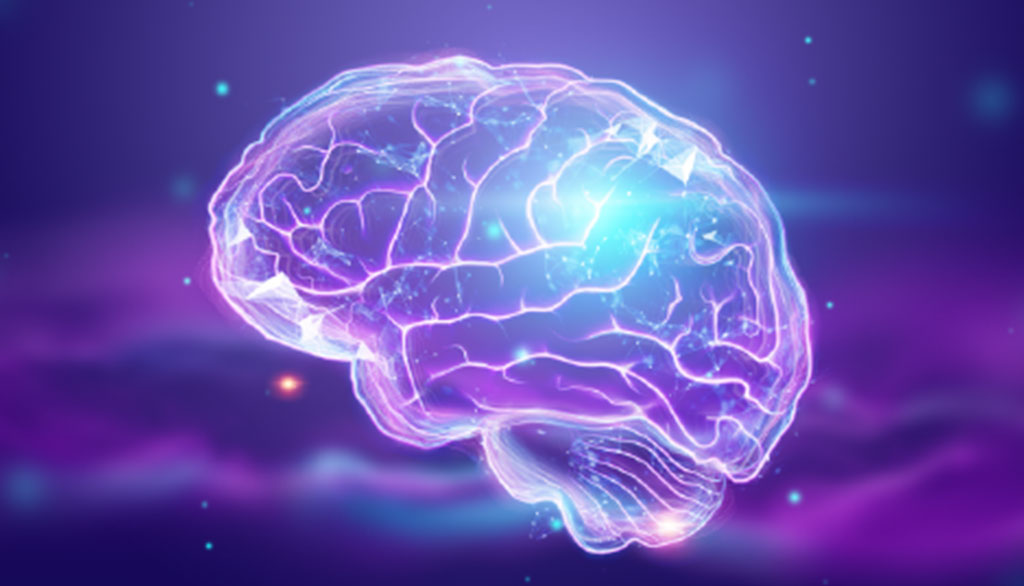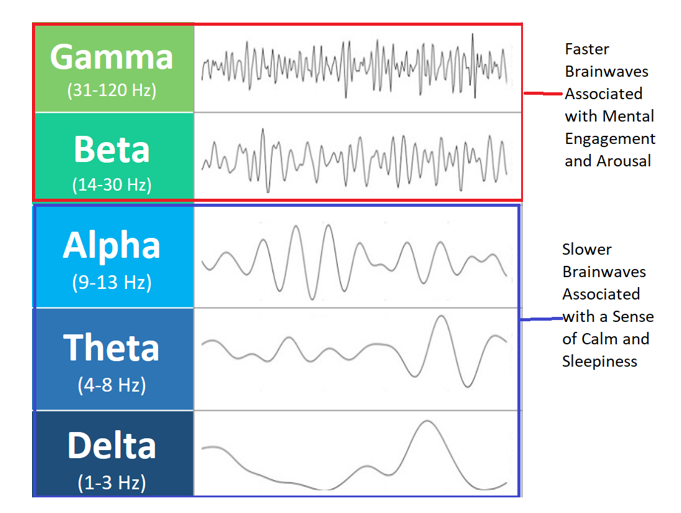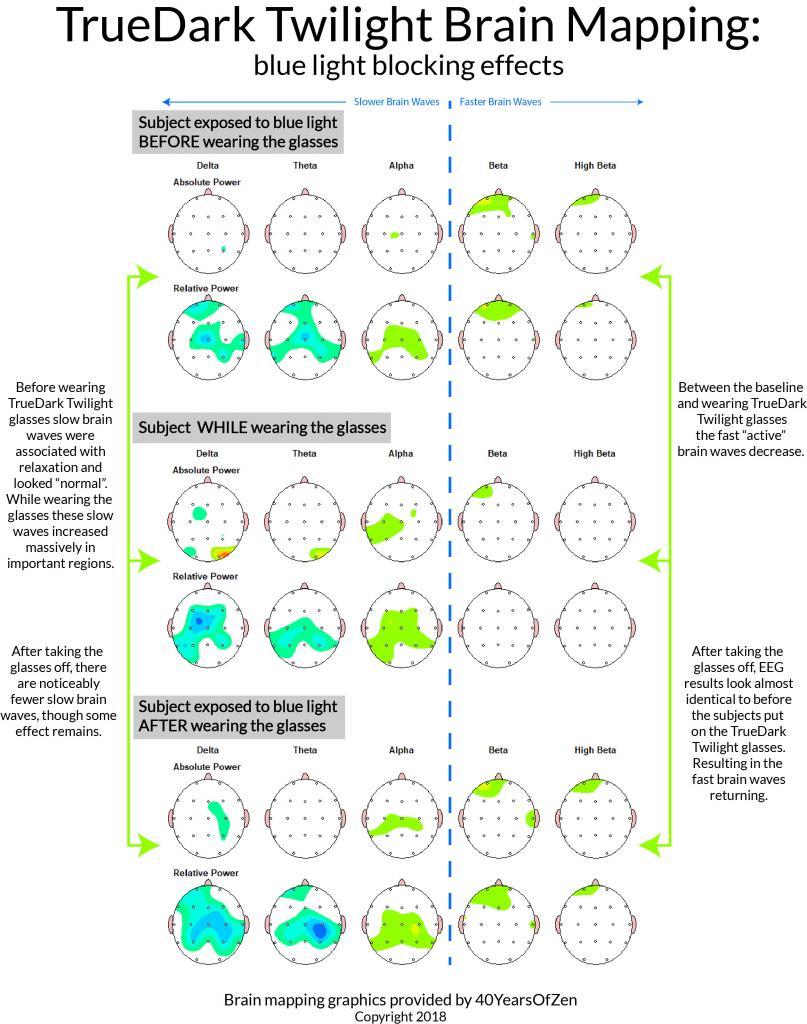Blue Light Blocking Glasses, Circadian Rhythm, Sleep, TrueDark® and Your Lighting
This is Your Brain on TrueDark® Twilights

Article at a Glance:
- At nighttime, it’s important to block out as much light as possible so that your body can wind down and prepare for sleep.
- TrueDark® Twilights use science-backed technology in their lenses to essentially black out your vision.
- As soon as you put the lenses on, your brain interprets that it is dark outside and signals to your body to start producing more melatonin.
- Melatonin is the key ingredient that your body needs in order to prepare for sleep.
Your brain on Twilights
So what’s actually going on in your brain when you wear your TrueDark® Twilights sleep blue light blocking glasses? In short, Twilights sleep glasses can help the brain shift into a mode that uses fewer “alert” brainwaves and more “sleepy” brainwaves.
There are lots of ways we have to measure activity and changes in the brain. Perhaps the most commonly known signaling in the brain happens in chemicals, which we can measure and observe; these are the neurotransmitters – the dopamine, serotonin, noradrenaline, cortisol, and many others. We can also measure changes in blood flow in the brain – this is the approach taken when people undergo an fMRI, a procedure in medicine and research that allows deep brain imaging.
There’s another way, though, that allows us to see micro-changes in the brain in real time, and is less clunky and invasive than the other two – by measuring the electrical activity in the brain, the EEG. This is what’s colloquially referred to as looking at brain waves, and it’s the approach we took in answering the question above.
If you’ve ever seen any of these so called “brainwaves,” you may have noticed there’s different speeds and sizes of what’s reading out; sometimes the EEG – the organized total picture of the person’s brain waves – looks really small, choppy, and fast. Other times, the chart produces bigger, slower, more rhythmic looking waves.
Without delving too deep into all of the kinds of categories experts separate different brainwaves into, we can make the somewhat sweeping statement that typically, these faster, smaller, choppier waves reflect lots of mental engagement, cognitive activity, and, above all, what we in science might call arousal. A lot of this type of activity shows that a person and more specifically different areas of their brain are awake, working, and sharp.
The slower waves, for our purpose, show the opposite; they show decreasing amounts of arousal, where the slower the brainwave, the less aroused we might expect to find a person. This might range from them just being particularly calm, to getting very drowsy, to dozing off, and eventually falling asleep as the biggest, slowest brain waves take over.

So, in looking at what happens to someone when they wear TrueDark® Twilights, we were looking for a trend from more of the former, fast brain brain waves (represented as gamma and beta in the above picture) to more of the latter, slow brain brain waves (like alpha, theta, and delta above). You might say our hypothesis was that after wearing TrueDark® Twilights for fifteen or so minutes, their brain would slow down. And in the subjects we tested, this is exactly what we found.
The way it happened looked different in different people. For some people, they had less of the really fast, busy-minded brain brain waves than they had at baseline. Others primarily showed a notable increase in the slow brain brain waves we associate with sleep, calm, and relaxation. Some showed both. But all of them showed some effect moving in this direction we had expected, increasing the ratio of slower brainwaves to faster brainwaves, as compared to their brain activity without wearing any glasses.
To further support this, we also looked at the same subjects’ brain activity after taking the glasses back off and having a few minutes of blue light exposure, expecting to see a move back in the direction of speeding up. This was important to control for the fact that when people are sitting around doing nothing but having their brains read out for a while, they may become bored and less mentally active.
While the results weren’t as clear cut as between baseline readings and people wearing the glasses, we still did see a trend to suggest that most people started to reverse this “sleepy” brainwave effect after a few minutes of blue light exposure. It’s possible that the people who didn’t, like most of us, had under slept and subsequently had a harder time getting un-sleepy once they were moving in the direction of becoming more tired (which is related to a chronobiology concept you may have heard of called sleep inertia).
Below is data from one of the subjects, which shows exactly the trend we expect to see, split into activity in each of the five different frequency bands discussed – before wearing this style TrueDark® Twilights, while wearing them, and afterwards with exposure to blue light. Each condition has all five bands, going from slowest on the left to fastest on the right. The subject starts with some beta and high beta activity frontally, (evidenced by the five “brains” all the way left) then puts on the glasses (the middle five) and shows a significant decrease in this fast activity and an increase in alpha, theta, and delta activity. When they take the glasses off (far right), there is a decrease in slow wave activity and an increase in fast frontal activity again.

As you see in the images above, our data shows that the TrueDark® Twilight glasses can decrease the faster brain waves Gamma and Beta, which show up when a person is more stimulated and mentally active, while increasing the “slower” brain waves of Alpha, Theta and/or Delta that are often present as the mind gets calmer and closer to sleep.
The findings were the same for both the Twilight Classics and the Twilight Elites. More testing remains to be done on the Elites regarding whether there are limitations of not having more full eye cover, risking peripheral blue light leaking in, but our initial testing showed they were just as effective in a very basic scenarios with light coming from straight ahead.
Moral of the story: your brain is getting calm . . . . and tired . . . . and now sleepy. . . and . . . . .


Pingback: What Is Junk Light and Why is it Bad for You? - Shop TrueLight